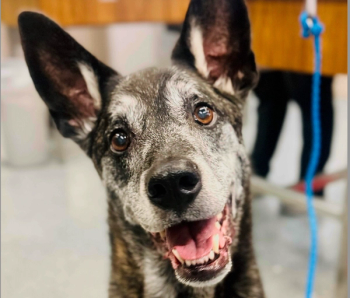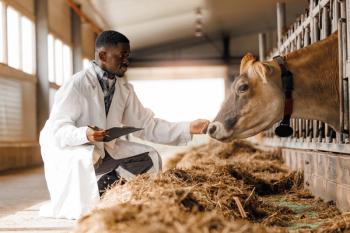
- Vetted June 2019
- Volume 114
- Issue 6
Virginia Tech veterinary students use VR technology to study dogs anatomy
Virginia Tech veterinary students were struggling to visualize a normal dogs anatomy. Enter Michael Nappier, DVM, Thomas Tucker and the VR experience.
With the VR technology, veterinary students can now view the organs of a normal dog.
Virginia Tech's College of Veterinary Medicine had a problem. After a curriculum revision three years ago, students started taking anatomy classes alongside performing physical exams on real patients, making it difficult for them to connect what they were learning in anatomy to those physical exams.
“Students were struggling to get a mental picture of the animal. All they knew were surgical views, which are upside down. They were all turning into contortionists just to try to get the right view,” says Michael Nappier, DVM, DABVP, assistant professor of community practice at Virginia Tech's Department of Small Animal Clinical Sciences.
That's when Dr. Nappier had an idea. What if there was a way for him to help students see a normal dog's anatomy? For this, he turned to one of his colleagues, associate professor of Virginia Tech's School of Visual Arts Thomas Tucker, for advice.
“I wanted to create a simulation of a dog's anatomy for the computer, but Thomas Tucker immediately said, ‘Oh, no, we're not doing anything that simple; we're going full virtual reality,'” Dr. Nappier says.
This resulted in an amazing collaboration between the veterinary and visual arts students. Tucker's students learned how to create the immersive dog anatomy environment while Dr. Nappier's students practiced veterinary medicine. In addition, Tucker's students were able to visit Dr. Nappier's class to see how their product worked in real time and take feedback from the people using it. And the veterinary students? They could examine a mid-sized dog's organs and bone structure without the confusion of surgical views. When they zoomed in on certain organs, they could see layers of tissue, and they could even step into parts of the virtual dog's body.
And the VR experience isn't stopping there. Dr. Nappier and his team recently received the grant money to create a VR cow, and, as you might suspect, other schools have contacted them about getting the VR experience in their classes. Dr. Nappier hopes they can soon put the VR technology on a streaming video game platform, making the technology free and open to everyone. So, it seems, VR might be the wave of the future in veterinary medicine.
Articles in this issue
over 6 years ago
Veterinary practices: Show us your ticks!over 6 years ago
12 self-care tips that don't involve bubble bathsover 6 years ago
Top 10 materials update for veterinary hospitalsover 6 years ago
Grain-free diets: Whats the hype?over 6 years ago
Beyond brushing pets' teethalmost 7 years ago
Getting clients to take recommendations seriouslyNewsletter
From exam room tips to practice management insights, get trusted veterinary news delivered straight to your inbox—subscribe to dvm360.






